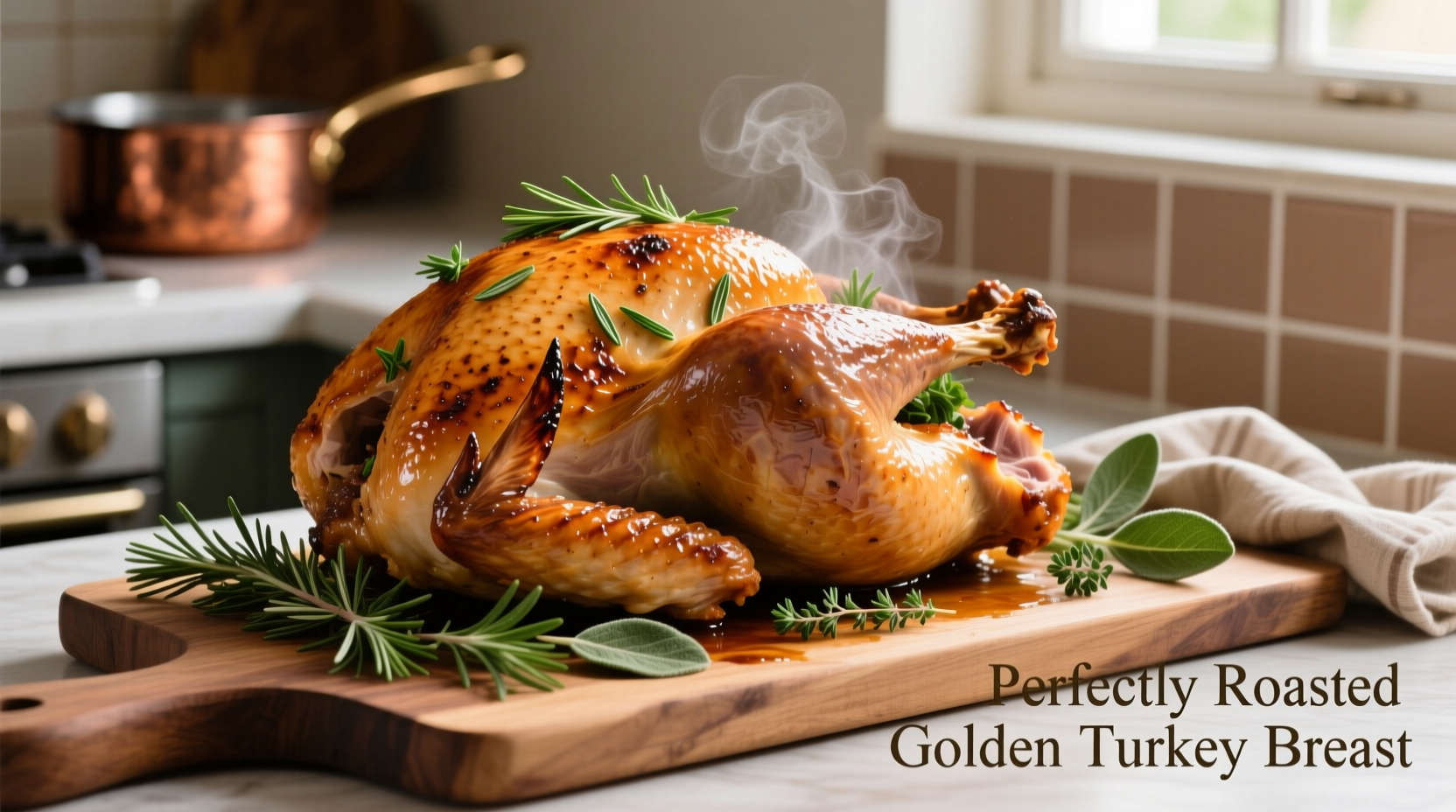As a professional chef who's cooked thousands of turkey breasts in both high-end restaurants and home kitchens, I've perfected a method that guarantees juicy results without fail. The secret isn't complicated equipment or rare ingredients—it's understanding the science of poultry cooking and following precise temperature guidelines.
Why This Turkey Breast Method Works
Cooking turkey breast properly balances food safety with moisture retention. The USDA Food Safety and Inspection Service confirms that 165°F (74°C) is the minimum safe internal temperature for poultry, eliminating harmful bacteria while preventing overcooking. Unlike whole turkeys, turkey breasts cook faster and more evenly, but require careful monitoring since they lack the protective fat of dark meat.
| Turkey Breast Weight | Estimated Cooking Time | Resting Time |
|---|---|---|
| 3-4 pounds | 60-90 minutes | 15 minutes |
| 5-6 pounds | 100-130 minutes | 20 minutes |
| 7-8 pounds | 140-170 minutes | 25 minutes |
Note: These times assume a 350°F (175°C) oven and a breast starting at refrigerator temperature. Always verify with a meat thermometer.
Equipment Checklist
- Instant-read meat thermometer (critical for perfect results)
- Rimmed baking sheet or roasting pan
- V-rack for even air circulation
- Aluminum foil
- Sharp carving knife
Step-by-Step Cooking Process
Preparation (24 Hours Before)
For maximum juiciness, implement a simple dry brine: Pat the turkey breast dry, then rub 1 teaspoon of kosher salt per pound evenly over the surface. Refrigerate uncovered for 12-24 hours. This process draws out moisture temporarily, then allows the meat to reabsorb seasoned liquid, enhancing both flavor and moisture retention during cooking.
Seasoning (1 Hour Before Cooking)
Remove turkey from refrigerator 60 minutes before cooking to take the chill off. This promotes even cooking. Pat dry again, then rub with 2 tablespoons olive oil. Create a flavor base with:
- 1 tablespoon garlic powder
- 2 teaspoons onion powder
- 1½ teaspoons dried thyme
- 1 teaspoon smoked paprika
- ½ teaspoon black pepper
Cooking Process
- Preheat oven to 350°F (175°C) with rack in the center position
- Place turkey breast on rack with thicker end toward oven back (heat varies)
- Insert thermometer into thickest part, avoiding bone
- Roast until thermometer reads 155-160°F (68-71°C)
- Remove from oven—the temperature will rise 5-10 degrees during resting
Resting and Slicing
Transfer turkey to a cutting board, tent loosely with foil, and rest for 15-20 minutes. This critical step allows juices to redistribute throughout the meat. Slice against the grain at ¼-inch thickness for maximum tenderness. Never skip resting—this is why restaurant turkey stays juicy while home-cooked versions often dry out.

Troubleshooting Common Issues
Dry Turkey Breast
This usually happens from overcooking or skipping the resting period. Remember that carryover cooking adds 5-10°F after removal from oven. Pull at 155-160°F, not 165°F. The American Institute for Cancer Research confirms that properly rested turkey retains up to 30% more moisture than immediately sliced meat.
Uneven Cooking
If one side cooks faster, rotate the pan halfway through cooking. For bone-in breasts, position the breast with the thicker meat portion toward the back of the oven where it's slightly cooler.
Skin Not Browning
For crisper skin, increase oven temperature to 425°F for the final 10-15 minutes. The Maillard reaction (browning process) occurs most effectively above 300°F. Just watch carefully to prevent burning.
Food Safety Timeline You Must Follow
Understanding the poultry cooking timeline prevents foodborne illness while maintaining quality:
- 0-40°F (4°C): Safe refrigeration temperature—thaw turkey in refrigerator, not on counter
- 40-140°F (4-60°C): Danger zone—minimize time in this range
- 140-165°F (60-74°C): Pathogen elimination phase—critical for safety
- 165°F+ (74°C+): Safe consumption temperature—USDA standard
Never partially cook turkey and finish later—this creates dangerous bacteria growth opportunities. The USDA Food Safety guidelines emphasize completing cooking in one session for poultry safety.
Serving Suggestions
Serve with simple pan drippings as gravy—just whisk 2 tablespoons flour into the hot drippings, cook for 1 minute, then slowly add 1 cup broth while whisking. For leftovers, store in airtight containers within 2 hours. Cooked turkey stays fresh for 3-4 days in the refrigerator according to FDA guidelines.











 浙公网安备
33010002000092号
浙公网安备
33010002000092号 浙B2-20120091-4
浙B2-20120091-4